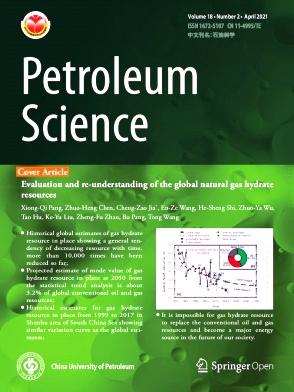Damage mechanism analysis of polymer gel to petroleum reservoirs and development of new protective methods based on NMR technique
IF 6
1区 工程技术
Q2 ENERGY & FUELS
引用次数: 0
Abstract
Polymer gels are widely used in water control and enhanced oil recovery in oil fields. However, the damage mechanism of polymer gels to layers with remaining oil and not requiring plugging and corresponding protective measures are unclear. In this paper, we investigated polymer gels' damage and protection performance through static gel-breaking experiments and dynamic plugging and oil recovery evaluations on rock cores. Moreover, nuclear magnetic resonance (NMR) technology was combined to analyze the damage performance of polymer gels on cores from the pore scale. In addition, a protective technique based on gel breakers for layers with remaining oil and not requiring plugging was proposed. Results showed that when polymer gels were injected into heterogeneous cores, they plugged high-permeability layers while also penetrating low-permeability layers. When the damage to the low-permeability layers was not alleviated, the conformance and oil displacement efficiency were significantly reduced. When the concentration of ammonium persulfate was 2%–5%, the gel-breaking time was shortest and the residue was very minimal. Therefore, ammonium persulfate could be used as a gel breaker and reservoir protective material. Furthermore, after injecting ammonium persulfate into heterogeneous reservoir cores, the gel damage on the face of low-permeability layers was relieved. Consequently, the improvement in sweep efficiency was achieved, showing the re-activation of the remaining oil in medium-low permeability layers. Therefore, the low-permeability layer protection process and core experiment study based on gel-breaking agents proposed in this study were suggested to provide a new technique for the field application of conformance modification agents, aiming to achieve higher recovery degrees.
求助全文
约1分钟内获得全文
求助全文
来源期刊

Petroleum Science
地学-地球化学与地球物理
CiteScore
7.70
自引率
16.10%
发文量
311
审稿时长
63 days
期刊介绍:
Petroleum Science is the only English journal in China on petroleum science and technology that is intended for professionals engaged in petroleum science research and technical applications all over the world, as well as the managerial personnel of oil companies. It covers petroleum geology, petroleum geophysics, petroleum engineering, petrochemistry & chemical engineering, petroleum mechanics, and economic management. It aims to introduce the latest results in oil industry research in China, promote cooperation in petroleum science research between China and the rest of the world, and build a bridge for scientific communication between China and the world.
 求助内容:
求助内容: 应助结果提醒方式:
应助结果提醒方式:


